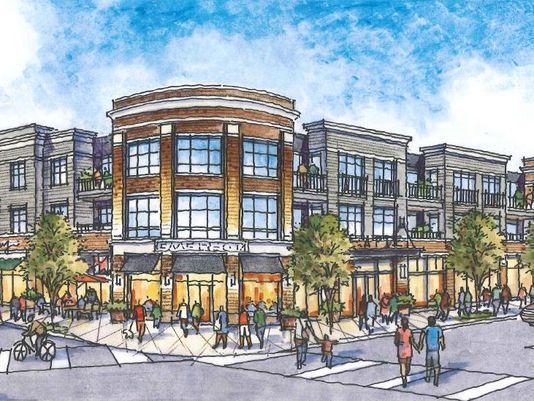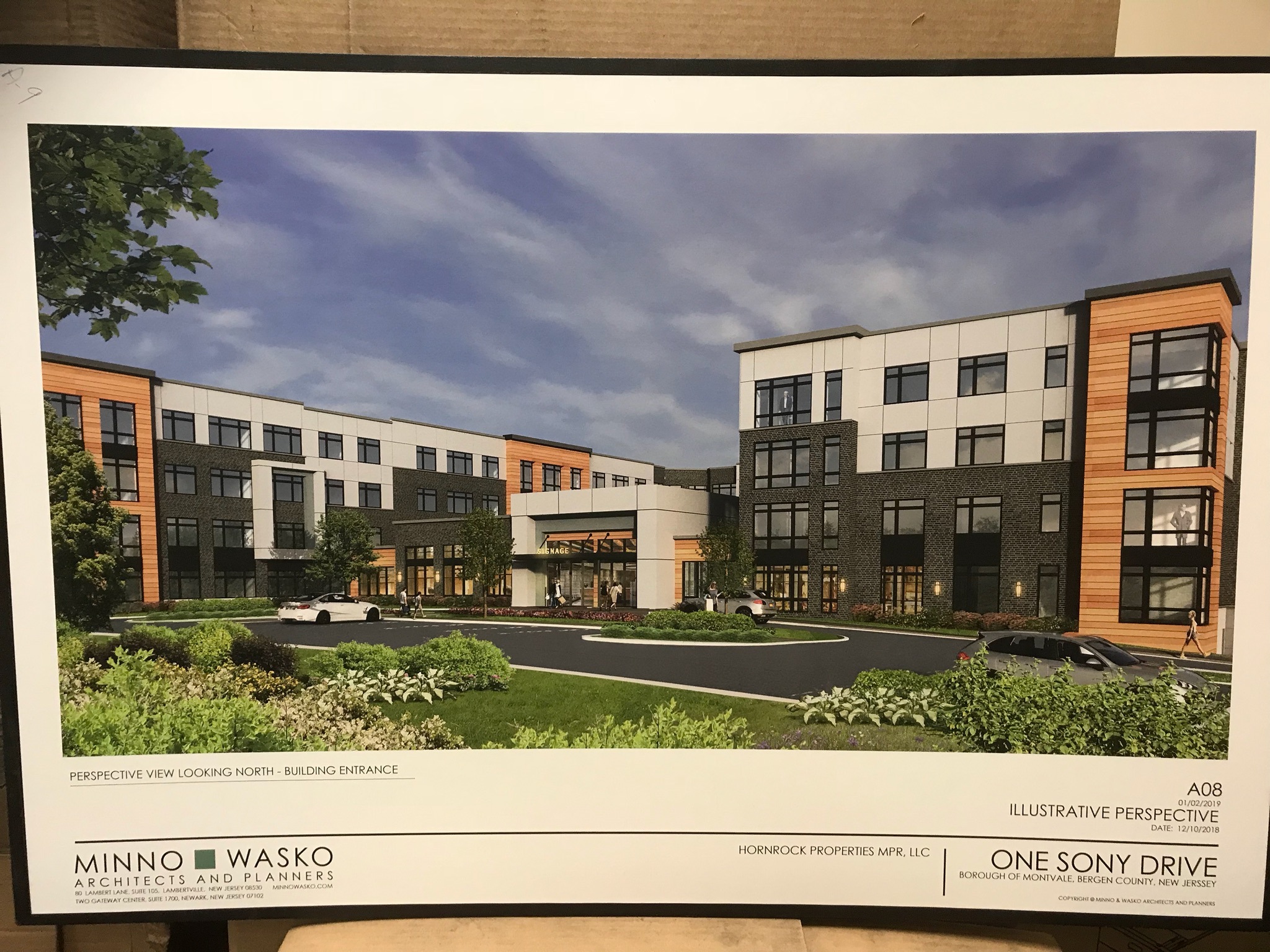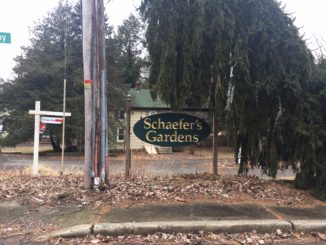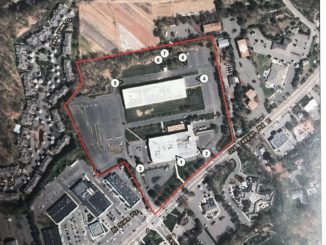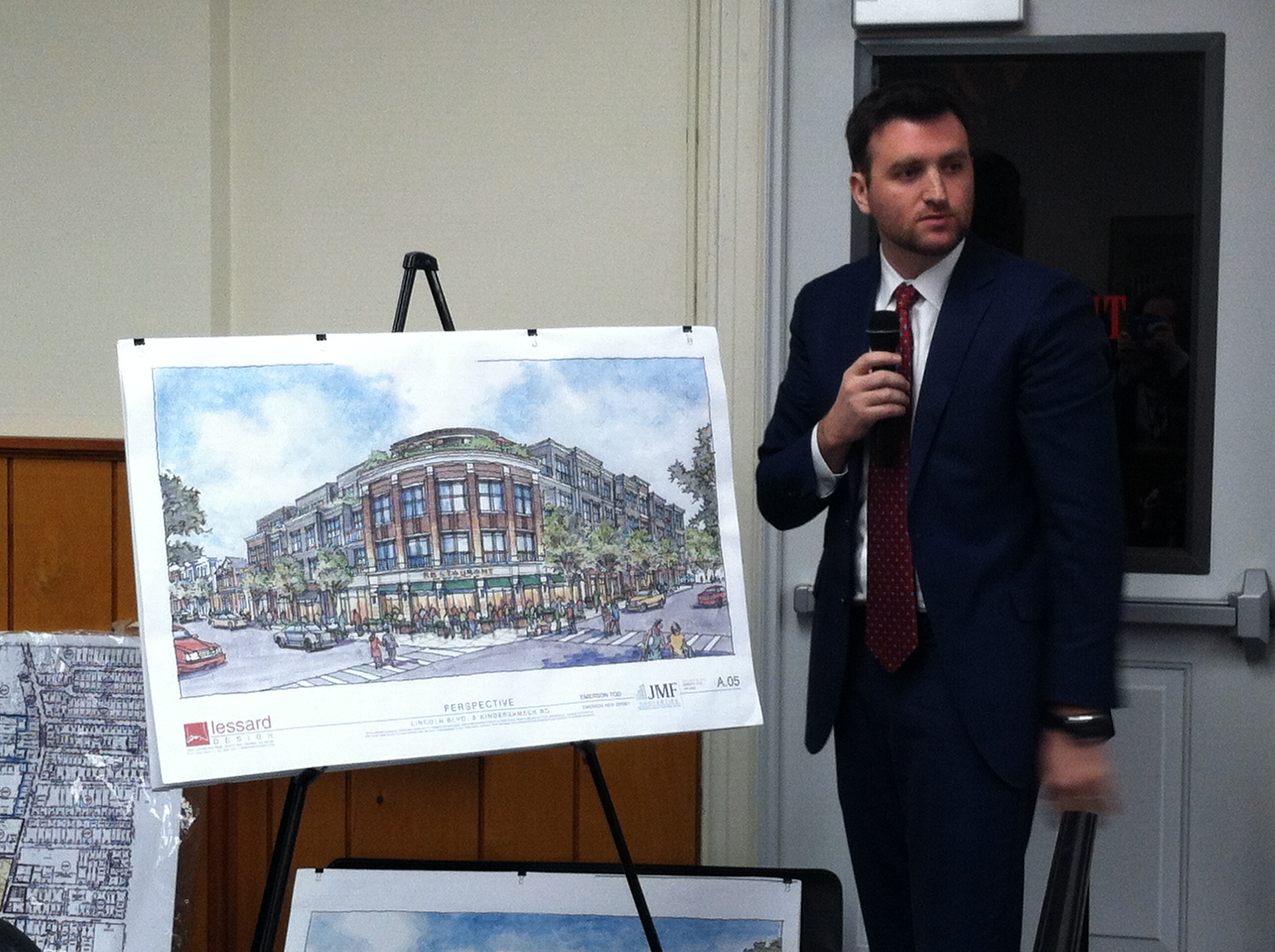
EMERSON—Many residents are calling for change on the Land Use Board after redevelopment on Kinderkamack Road between Lincoln Boulevard and Linwood Avenue passed in a single session where important questions were seen as not raised—or raised but left unanswered.
Following a presentation from Emerson Redevelopers Urban Renewal, an affiliate of JMF Properties, the board voted Dec. 10 to grant preliminary and final approval for a four-story mixed use project on Block 419, complete with 147 apartments from studios to three-bedrooms, 14,700 square feet of retail space, and a garage offering “four floors and rooftop” parking.
Commuter and retail parking are at ground level. The number of spaces—308 total, with some 120 for commuters and shoppers to share with residents—is subject to change.
The project, contracted for with the borough in 2016, will yield 29 affordable units, seven of which JMF is to site elsewhere—that’s to be determined—and a new emergency services building for Emerson.
ERUR, established equally in 2016 by Giuseppe Forgione and Steven Kalafer, also won a long-term tax exemption for the project, agreeing to payments in lieu of taxes, which encourages the development of property in blighted or distressed areas.
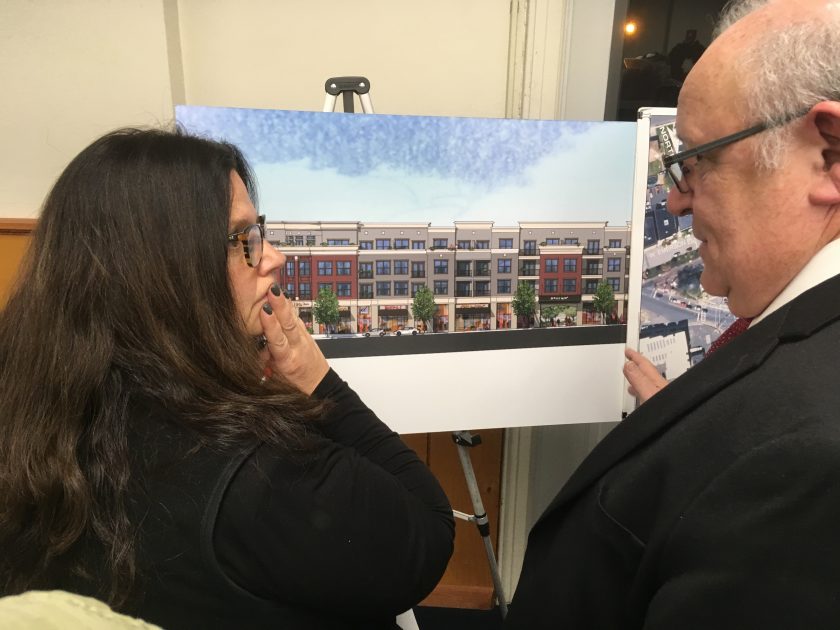
The vote was 6-2, with one abstention. Work is to commence within 120 days of getting government approval.
Tentatively dubbed Emerson Station, the project, a 50-foot-tall “continuous street wall” as measured by its rising and falling parapets, links together inside to give renters access to a lobby, club, and fitness center.
Their apartments—the top floor units are set back five feet—will offer abundant glass through which to take in the streetscape below.
There will be no Dumpsters. Trash will be compacted and wheeled out to a private hauler. Curb cuts will be removed, except for the one serving Lot 5, which the project flows around and which the borough planner said she agrees is out of scale with its proposed surroundings.
At the standing-room-only hearing, ERUR attorney Peter M. Flannery introduced witnesses on parking, engineering, and architecture, all of whom spoke of the project in glowing terms.
Board attorney Chris Martin led questioning, often deferring to Gary Ascolese of Boswell Engineering.
Charles Olivo, principal of Stonefield Engineering and Design, lauded the project as an exemplar of transit oriented development.
“This is the exact type of project municipalities are looking for,” he said.
He added there would be “more than adequate parking” for commuters, residents, and shoppers, who he suggested would flip spaces as one group leaves and another arrives.
“We’re below the threshold of what we would call a significant increase in traffic,” he said.
When it was pointed out to him that local motorists even now struggle with multi-cycle delays after a train passes by, Olivo urged residents to take the long view.
“That is the sacrifice we make when we take cars off the roadway. The people that are within cars have to wait. You’re part of a multimodal system. Public transportation…takes vehicles off the regional roadway network,” he said.
‘All the I-don’t-knows…’
Residents at the public microphone, including Mayor-elect Danielle DiPaola, said they were shocked by the hearing’s lack of feasibility studies and site appraisals—particularly for traffic and the environment—and knocked assumptions to do with parking, trash removal, and flood mitigation.
DiPaola reminded the board she and her ticket swept in on the issue of overdevelopment. She derided the proposal’s rendering as too big and boxy, particularly compared to the first pitch rendering, which she held up for comparison.
She asked the board whether the new design was “really what you want to see in the downtown for the next 100 years.”
Resident Jill McGuire pleaded with the board to consider the project’s impacts alongside others pending.
“How can you in good faith move forward without a traffic study?” she said.
Resident Mike Myers asked the board, “What are we going to get, five more pizza places? Five more banks? What are we going to get that benefits us?”
Later he questioned whether retail deliveries would worsen traffic—then mocked a hypothetical “cafe on the corner where people are going to breathe in bus fumes while they sip their lattes.”
There was a dispute as to whether parking on five floors constitutes a five- or four-level garage.
There are three monitoring wells and an underground oil tank on Block 419, and a dry cleaner and former gas station. Asked if there had been any environmental impact studies under his company’s new acquisitions, Flannery said, “I don’t know.”
As the crowd laughed, he added, “It’s irrelevant.”
The resolution depends on county and state approval, including from the state DEP. A waiver for preliminary Bergen County Planning Board approval was granted.
Flannery’s associate Jack Klugman said ERUR is conducting due diligence, including lining up financing and closing on properties, and would know more “in the next few months, probably.”
Voting yes were members Alban Bresa, Michael DeOrio, Steven Malone, Doug McKendry, Norman Rieger, and Chairman Gary Schwinder.
Voting no were Thomas Sudano and Mike Cimino.
Robert Adams abstained.
Mayor Louis J. Lamatina and Councilman Gerald Falotico stepped off the dais and out of the room at the start of proceedings at Martin’s recommendation.
With the results noted, and a resident then shouting out, “You should be ashamed of yourselves!” Schwinder said, “I caution the applicant to take into account what has been said tonight. There were a lot of questions raised.”
Schwinder says board is dedicated
In calling for the vote, Schwinder noted he has served on the LUB for six or seven years and was sure the board was dedicated to serving “to the best of their abilities and with their heart in the right place.”
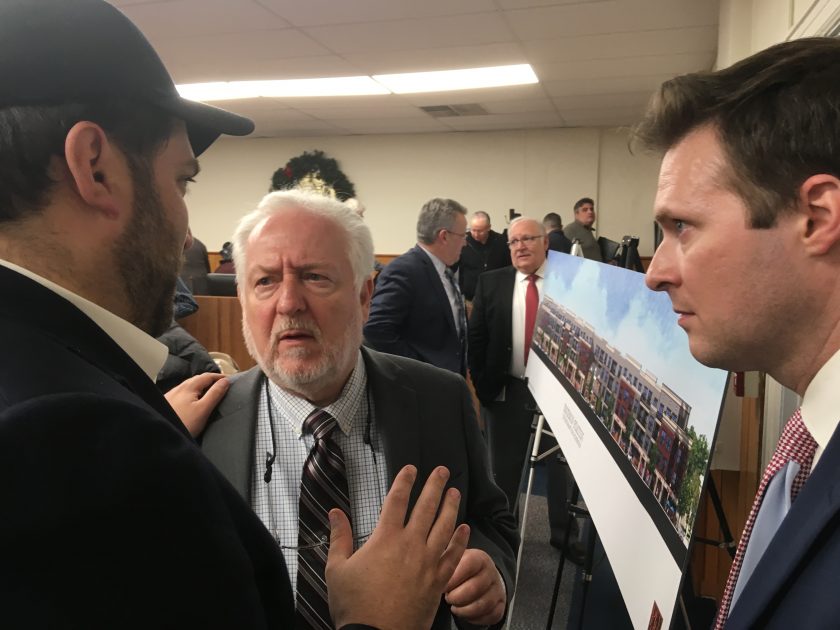
He said redevelopment has been under discussion “for years and years. We all want to see this town look better.”
Of borough traffic worsening under his watch, he said, “Has there been a big development in Emerson that has caused traffic to get worse? No. It’s coming from people crossing through Emerson on one of the busiest roads in the county.”
Then he asked, “Do we have to stop our progress while other communities are building?”
He told Pascack Press later that the redevelopment protects the borough against a builder’s remedy lawsuit.
Schwinder also said that the four developers brought in to look at the site said they would need a certain density to make their investment profitable.
“You can’t go any further beyond 419. The only way to go was up, and that’s why there’s a fourth floor,” he said.
Reached for comment Dec. 13, Lamatina said he was pleased with the vote, saying it “fulfills a vision of the governing body dating back to 2006, where the entire business district was designated as a redevelopment zone by Borough Ordinance 1305-06, unanimously enacted by that Council.”
He singled out Councilman-elect Ken Hoffman, who he said “should also take some comfort in this historic vote, as he was one of the six councilpersons who adopted that massive plan in July 2006.”
That said, it was Lamatina who broke a 3-3 council vote in December 2016 to allow four-story development in the borough’s redevelopment area.
He campaigned for re-election on the promise of four-story downtown redevelopment as a partial consequence of the borough’s affordable housing settlement and said eminent domain threats against holdout property owners (who sued the borough) was sound and justified.
He lost re-election in a Republican sweep.
